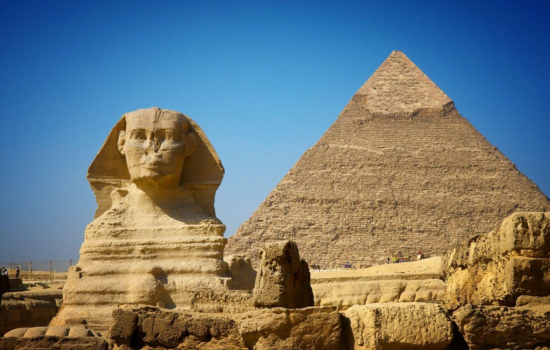Adverts
Welcome to our blog, where we will delve into the deep mysteries surrounding the Moon! Throughout history, this brilliant and enigmatic natural satellite has fascinated humanity, arousing curiosity and questions. Behind its unique beauty, the Moon holds secrets that science is still struggling to unravel.
Adverts
In this article, we’ll explore the mysteries surrounding the Moon, delving into both the stories and legends surrounding it and the most recent scientific discoveries. Prepare to be transported into a world of intriguing theories and fascinating evidence.
In the following lines, we will explore the myths and legends surrounding the Moon in different cultures around the world. After all, since ancient times, the Moon has been a source of inspiration for countless narratives and beliefs. We will discover how different civilizations interpreted the presence of the Moon in their lives and how it influenced their cultures.
Adverts
We’ll also explore the scientific advances that have allowed us to unlock some of the Moon’s best-kept secrets. From early space missions to NASA’s most recent discoveries, we’ll reveal what science has learned about the Moon’s composition, formation, and influence on our planet.
Get ready for an exciting journey through the mysteries of the Moon, where history and science meet to uncover the secrets that this star, so close and yet so far away, holds. Embrace your curiosity and join us on this quest for knowledge and understanding of the universe around us. Let's begin this fascinating journey together!
Mysteries of the Moon: What do History and Science Hide?
Have you ever looked at the Moon and wondered about all the secrets and mysteries it holds? The Moon, our natural satellite, has fascinated humanity since the dawn of civilization. Both history and science have tried to unravel the enigmas surrounding this celestial body so close to us.
The Moon has many advantages that make it such an interesting object to study. One of the main ones is its proximity to Earth. At just 384,400 kilometers away, the Moon is the closest celestial object to us. This means that we can observe it in great detail and carry out more precise research. In addition, the Moon serves as a natural laboratory for studying the formation of celestial bodies and the evolution of the solar system.
Another advantage is its influence on Earth. The Moon exerts a gravitational force that causes tides in the oceans. This relationship between the Moon and Earth has been studied over the years, and there is still much to be discovered. Understanding this influence better could have important applications, such as predicting earthquakes and improving maritime navigation.
History also hides fascinating mysteries about the Moon. Since ancient times, various cultures have attributed meanings and legends to the Moon. It has been associated with gods and goddesses, and many myths and rituals have been created in its honor. However, history also reveals humanity's relentless quest to explore the Moon. From the first space missions to current plans for lunar colonization, the Moon has been the target of human curiosity and ambition.
Science has also revealed many secrets about the Moon. Through space missions and scientific studies, we have learned about its composition, origin, and geology. We have discovered that the Moon is not just a lump of inert rock, but a complex world with a fascinating history. For example, the most widely accepted theory about the origin of the Moon is that it formed after a collision between the Earth and a celestial body the size of Mars. This collision would have thrown material into space that eventually came together to form the Moon.
To better understand the Moon, science uses different methods of study. One of them is direct observation through telescopes and space probes. Another method is the analysis of lunar samples brought back by the Apollo missions. Through these samples, scientists were able to study the chemical composition of the Moon and discover clues about its formation and evolution.
In short, the mysteries of the Moon are countless and fascinating. History and science have dedicated themselves to unraveling them, but there is still much to be discovered. The Moon's proximity to Earth and its influence on our planet make it a privileged object of study. Through the knowledge acquired about the Moon, we can better understand the origin and evolution of our solar system. Whether looking at the night sky or studying its rocks, the Moon will continue to enchant and challenge us with its mysteries.
Conclusion
In conclusion, the mysteries of the Moon are fascinating and continue to intrigue historians and scientists alike. Through the study of history and science, we can gain a more comprehensive view and better understand the secrets that this natural satellite holds.
Over the centuries, the Moon has been the subject of speculation and conspiracy theories. However, history shows us that lunar exploration has played a crucial role in the advancement of humanity. From the first observations of ancient people to NASA's manned missions, the Moon has always been present in our imagination and curiosity.
Science, in turn, has given us a deeper understanding of the mysteries of the Moon. Through geological studies, analysis of samples brought back by the Apollo missions, and the use of advanced technologies such as probes and telescopes, scientists have made surprising discoveries. For example, we now know that the Moon has a unique geological composition and that its formation is intrinsically linked to the history of our Solar System.
Transition words, such as “furthermore,” “on the other hand,” and “on the other hand,” can be used to create a cohesive and coherent structure for the conclusion. Additionally, it is important to use SEO-relevant keywords, such as “mysteries of the Moon,” “history,” “science,” and “secrets.”
In short, the mysteries of the Moon represent a vast and promising field for scientific and historical research. As our knowledge about our natural satellite advances, more questions arise and more answers are found. The intersection between history and science allows us to unravel the hidden layers of this celestial body and better understand its importance to humanity. We will continue to explore and unravel the secrets of the Moon, feeding our curiosity and seeking knowledge about the mysteries it hides.




